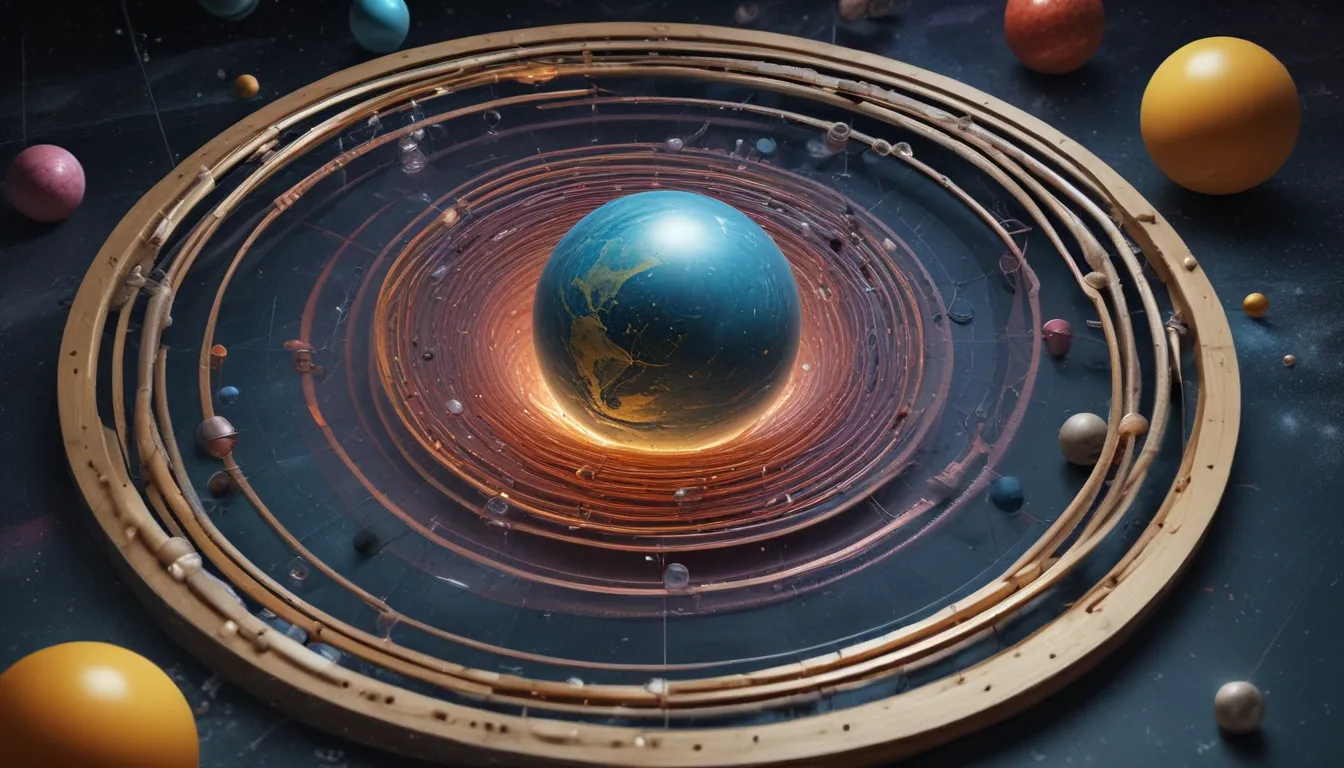A Note About Images: The images used in our articles are for illustration purposes only and may not exactly match the content. They are meant to engage readers, but the text should be relied upon for accurate information.
Gauss’s Law of Gravitational Fields, named after the great mathematician Carl Friedrich Gauss, is a cornerstone concept in physics that has reshaped our understanding of gravity. This fundamental law provides a mathematical framework for describing the gravitational field produced by an object, offering valuable insights into how gravity operates in the universe.
Unveiling the Significance of Gauss’s Law
Gauss’s Law of Gravitational Fields plays a pivotal role in unraveling the mysteries of gravity and its distribution in space. By connecting the gravitational field to the mass distribution in a given region, this law enables us to comprehend the complex interplay between gravity and celestial bodies.
Calculating Gravitational Flux with Gauss’s Law
A key application of Gauss’s Law of Gravitational Fields is the calculation of gravitational flux through a closed surface. This flux represents the total gravitational field passing through the surface and aids in determining the net gravitational force acting on an object within that boundary.
Relationship with Newton’s Law of Universal Gravitation
Gauss’s Law of Gravitational Fields shares a close connection with Newton’s Law of Universal Gravitation, which describes the gravitational attraction between two objects based on their masses and the distance between them. Understanding Gauss’s Law enhances our grasp of how gravitational forces are distributed in various systems.
The Integral Equation of Gauss’s Law
Gauss’s Law of Gravitational Fields is defined using an integral equation that involves integrating the gravitational field over a closed surface. This mathematical formulation allows us to quantitatively analyze the distribution of gravitational forces and their effects on nearby objects.
Principle of Superposition in Gravitational Fields
One intriguing aspect of Gauss’s Law of Gravitational Fields is its adherence to the principle of superposition. This principle states that the net gravitational field resulting from multiple mass distributions is the sum of the individual gravitational fields produced by each distribution. It offers a valuable tool for analyzing complex gravitational scenarios.
Verification of the Inverse Square Law
By applying Gauss’s Law of Gravitational Fields to a spherical mass distribution, we can validate the inverse square law of gravity. This law dictates that the gravitational force between two objects decreases inversely with the square of the distance between their centers, shedding light on the fundamental nature of gravitational interactions.
Universality of Gauss’s Law in Physics
Gauss’s Law of Gravitational Fields transcends classical physics and extends into the realm of general relativity, showcasing its universal applicability across different physical theories. This law serves as a foundational principle for understanding gravitational behavior in various contexts.
Applicability to Celestial Bodies and Beyond
Beyond Earth, Gauss’s Law of Gravitational Fields applies to celestial bodies ranging from planets to galaxies, offering a comprehensive tool for studying gravitational interactions across the universe. Its versatility in different cosmic scenarios underscores its significance in unraveling the complexities of gravity.
From its analytical prowess to its practical implications in understanding the gravitational forces governing the cosmos, Gauss’s Law of Gravitational Fields stands as a cornerstone of physics with far-reaching implications. By delving into the intricacies of this law, we gain a deeper appreciation for the intricate dance of gravity in the universe.
FAQs: Exploring Gauss’s Law of Gravitational Fields
Q: What is Gauss’s Law of Gravitational Fields?
A: Gauss’s Law of Gravitational Fields is a foundational concept in physics that links the distribution of mass to the resulting gravitational field, aiding in the analysis of gravitational forces in diverse systems.
Q: How does Gauss’s Law of Gravitational Fields relate to Newton’s law of gravity?
A: Gauss’s Law of Gravitational Fields complements Newton’s law of gravity by providing insights into the gravitational field created by mass distributions, enhancing our understanding of gravitational interactions.
Q: Does Gauss’s Law of Gravitational Fields apply only to planets and stars?
A: No, Gauss’s Law of Gravitational Fields applies to any system with gravitational fields, allowing for the analysis of gravitational interactions in celestial bodies of varying sizes.
Q: Can Gauss’s Law of Gravitational Fields be applied beyond our solar system?
A: Yes, Gauss’s Law of Gravitational Fields is a universal principle applicable to systems both within and outside our solar system, offering a tool to study gravitational fields across the universe.
Q: How does Gauss’s Law of Gravitational Fields align with the inverse square law?
A: Gauss’s Law of Gravitational Fields supports the inverse square law by demonstrating how gravitational field strength diminishes with distance from a mass, showcasing the law’s consistency with gravitational principles.
Q: What is gravitational flux in relation to Gauss’s Law of Gravitational Fields?
A: Gravitational flux measures the gravitational field passing through a closed surface, aiding in understanding mass distribution within systems and serving as a key concept in Gauss’s Law.
Q: How can Gauss’s Law of Gravitational Fields be used to study celestial objects?
A: Gauss’s Law of Gravitational Fields enables scientists to analyze the gravitational fields of celestial objects by examining their mass distribution, facilitating predictions and insights into planetary, stellar, and galactic behaviors.
Q: What practical applications does Gauss’s Law of Gravitational Fields offer?
A: Gauss’s Law of Gravitational Fields has diverse practical applications, including studying galaxy structures, determining planetary orbits, predicting celestial body motions, and contributing to gravitational wave research.
Q: Is Gauss’s Law of Gravitational Fields limited to large-scale systems?
A: No, Gauss’s Law of Gravitational Fields can be applied to systems of all sizes, providing valuable insights into gravitational fields regardless of the scale of the system under study.
Delve into the realm of Gauss’s Law of Gravitational Fields to uncover the intricate web of gravitational forces shaping the universe. With its profound insights and diverse applications, this fundamental concept offers a gateway to a deeper understanding of gravity’s pervasive influence on celestial bodies and cosmic phenomena. Engage with the captivating world of physics and explore the mysteries of gravity through the lens of Gauss’s Law.






